How to properly attach a terrace to the house with your own hands?
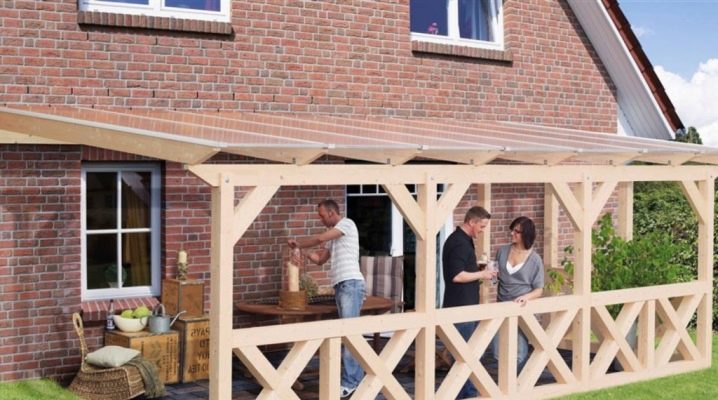
The arrangement of terraces near the house is considered by many people as a very attractive decoration solution. But, as in any type of construction work, there are subtleties here that must be taken into account. If you do this, building a great looking structure turns out to be quite simple and accessible to almost everyone who knows how to work with tools. It is not necessary to invite professional builders for this.
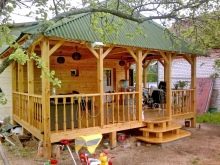
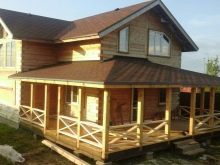
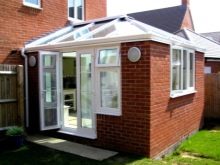
Types of structures
Strictly speaking, terraces are only open (this is the interpretation given in SNiP), and all closed annexes to houses, no matter how they look outwardly, should be called verandas. The semi-open type - without walls or equipped with low walls - has sufficient space, and a roof or canopy will help to avoid the effects of precipitation and sunlight. But all the same, furniture will have to be placed as far as possible from open places.

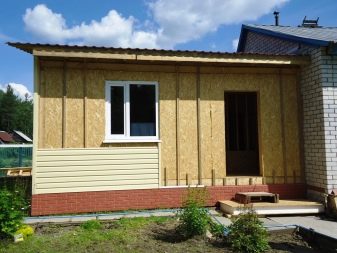
The pergola version is ideal for dry areas, and it is not at all necessary that the structure be covered with vines. After all, metal lattices with dense weaving are considered self-sufficient, they allow you to decorate the space both from above and from the edges. Simultaneous closure from prying eyes is provided with harmonious sunlight.

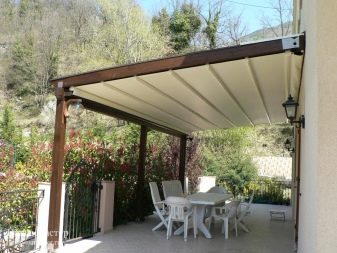
When you intend to get the visual effect of graceful leaves, but do not wait until the pergola is covered with vines, and do not care for them, you need to reproduce the appearance through carving. But it is possible to make an external grid and very rare, only hinting at the intention of the developers. An exotic variety is a roof terrace. It is much more spacious than a simple balcony, and a retaining wall is almost never used, only a fence. There will be no talk about such an option, but its existence should be taken into account.
The wooden type of terraces is actually not the same either. Differences can be manifested in size, shape, number of levels of the structure, the possibility of free access to the structure or fencing it with decorative plantings.
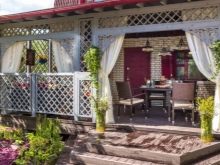
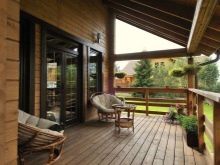
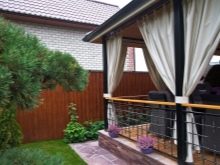
Project: dimensions and shape
The selection of the size and configuration is determined by the size of the site and the house built on it. Tiny terraces adjacent to a large building are perceived aesthetically unnaturally. Extension less than 4 sq. m is uncomfortable, and no methods will help to correct the situation. The project should include the minimum consumption of slabs of concrete and ceramics, since this will reduce the labor intensity of the work. Terraces are best done rectangular in order to combine the lines of structures with each other.
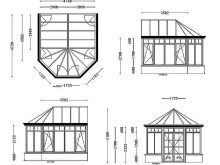
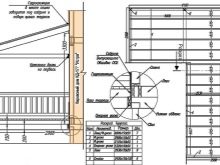

Important: tiles fit better in a rectangular terraceand wood flooring allows you to vary a wide variety of shapes through the use of electric jigsaws. But again, it is required to maintain visual consistency between the configuration of the extension and the main part of the house.
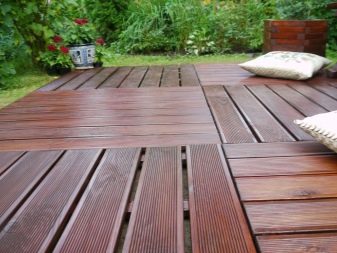
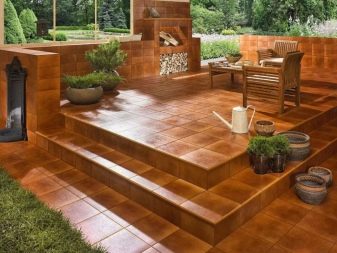
Barbeque terraces are considered one of the best decoration solutions. It should be borne in mind that stoves are very heavy and large structures, which is why it is necessary to build a foundation, possibly for the terrace as a whole. We'll also have to make a good, uninterrupted drainage system. The work associated with its arrangement is quite laborious and can significantly increase the total cost of construction. The screed must be reinforced, and the foundation must be strictly in the form of a monolithic slab.

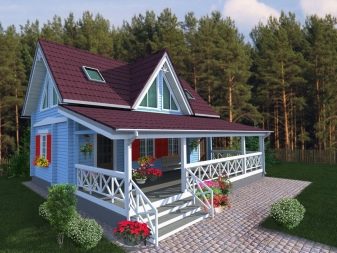
The grillage is not made concrete; this type of structure would be unnecessarily difficult to work with.Usually it is made either from a channel, which is connected to piles by electric welding, or from a bar encircling the perimeter and axis of the supports. In a spacious terrace, the stove is best placed in the center, using it to distribute the space to the guest and kitchen areas. It is quite common to install a barbecue on one side and a semicircular structure that cuts off the selected corner.

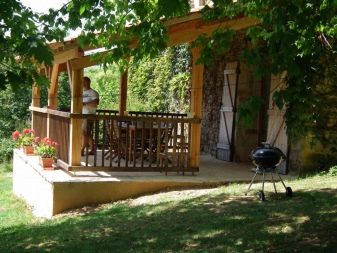
Frame construction can be made on the basis of both wood and metal.
The choice of a particular material is determined by the following factors:
- convenience and practice of work;
- the allocated budget;
- the necessary strength of the extension.

Even the high cost and difficulty of processing hard woods does not negate its high strength and stable service for a long time. It is from such materials that the lower straps of the frames should be formed. To save money, the upper part of them is made from softer and more affordable rocks. It is unacceptable to use a tree that has even the slightest signs of decay, cracking, chips, wormholes and similar defects. The highest permitted moisture content of a tree for the construction of a frame is 14%, but it is better to limit yourself to 12%, so it will be much more reliable.
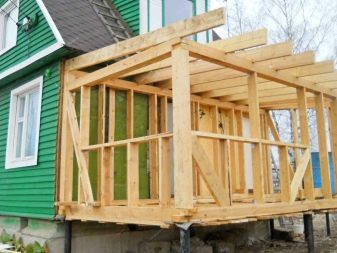
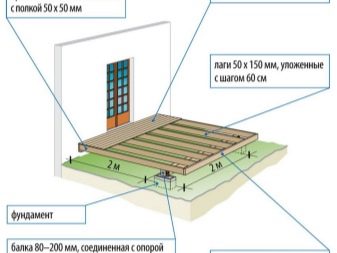
The welded metal frame is relatively strong. But one must take into account the fact that the dismantling of its individual parts will be impossible, it will be necessary to remove the entire structure as a whole. The minimum allowable cross-section of round and shaped pipes is 0.25 cm. If you take a thinner structure, welding will be more difficult, and due to the increased stress in the metal, significant deformations may appear. Before using a used metal block, it is imperative to inspect it for major irregularities.
A terrace with a balcony always has an external fence and is quite narrow. When you need to fasten the support bar to a brick structure, you will need to prepare the connection points: holes are drilled in the walls into which dowels or corks from wood are mounted.
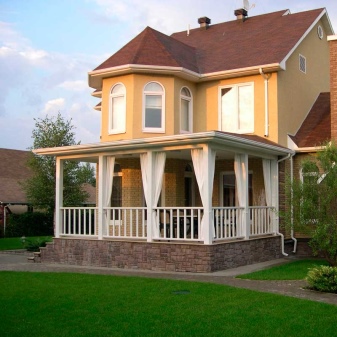
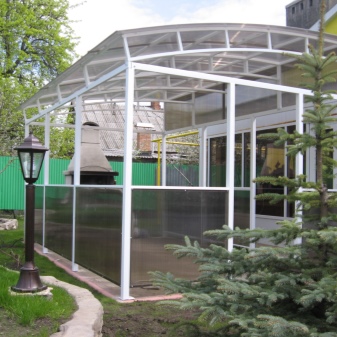
Important: the placement of holes with a slight slope from top to bottom helps to increase the reliability of fastening., the same requirement is recommended when working with a wooden base. Often, the support beam is shortened by the width of one lag at both ends, after which they are adjusted to the ends and attached with bolts, and the suspensions will provide the bunch between the intermediate links.
Anchor bolts help to connect the timber and brick walls, special supports can increase the reliability of such a structure, the cross-section of which is 5x15 cm.The distance between the supports should be 120 cm, and it is especially important to use them in areas where there is a lot of precipitation. The holes in the timber are made in increments of 400 to 600 mm, bolts with a diameter of 1 cm must freely pass through them.
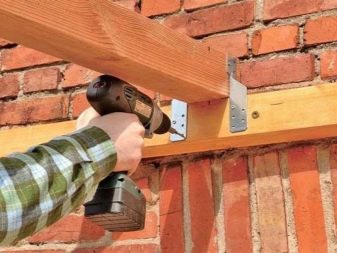
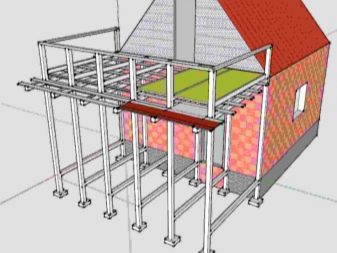
Foam block terraces are much easier to build than using wood or bricks, because the labor intensity of the work is noticeably reduced. The products initially have the correct geometric contours and strict dimensions, which allows you to accurately calculate the need for material and design the structure without errors. Structures based on foam concrete are mostly created on top of strip foundations, but when the house is initially planned to be supplemented with a terrace, it is required to prepare a common slab base of the required configuration.
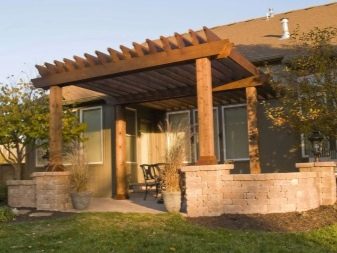

Legalization of the extension
It is technically quite simple to make a terrace in the country house, but regardless of the skill of home craftsmen or the cost of the services of hired builders, you will need to register the building with the authorities. You cannot do without submitting documents to the structures responsible for fire safety, for sanitary and epidemiological control. The permits received from them are transferred to the administration of the inhabited locality or rural settlement.The expenditure of time, effort and money for registration is not in vain, because in the future, its absence may entail sanctions up to the demolition of the building. And even if this does not happen, the sale, lease, exchange, provision of security for the loan will be impossible or difficult.

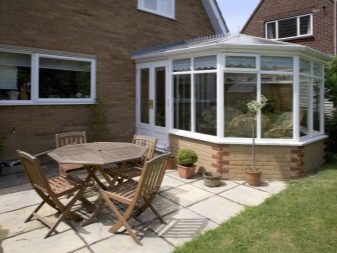
Tools and materials
It is imperative to use various kinds of tools during construction.
Each master has an individual set of them, but it is impossible to build a terrace without the use of:
- electric jigsaw;
- bayonet shovel;
- building level;
- hammer;
- roulette;
- chisels and screwdrivers;
- drills and markers;
- staples and paint brushes.
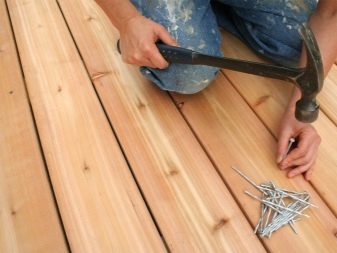
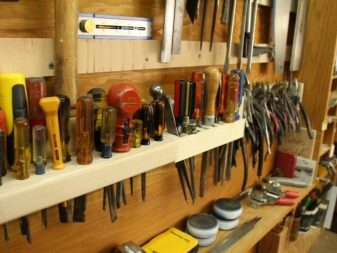
As for the materials, you will need to use high-quality boards, cement at least M400, an antiseptic, steel blanks for structures and paints and varnishes. The wooden terrace is relatively strong and as reliable as possible, guarantees comfort and looks more attractive. In addition, construction work will be completed quickly and costs will be significantly lower. Bricks, concrete and natural stone are much harder, but their design possibilities are worse, it will not work at all to embody a certain part of the design ideas. The use of metal (steel and cast iron parts) allows you to create very elegant designs and decorative elements, but you have to accept the increased costs.

A metal terrace will be especially expensive for those who do not know how to independently work with such materials. - but welding skills are not as common as carpentry skills, and the situation is similar with the tool. The most modern options, like wood-polymer composites, are easier to process than traditional products, and the initial PVC coating allows you to do without impregnations that protect against decay. The most economical of all is the use of elements remaining from the construction or repair of a house, but you will need to carefully check them for the absence of deformations, for protection from negative natural phenomena.


Step-by-step construction instructions
Competently attaching the terrace to the house means meeting two key requirements: eliminating the sag and spring effect of the floor, and also ensuring the strength and safety of the mounted railings. It is recommended to provide for the construction of an extension already at the design stage of the dwelling, then it will be possible to use a common foundation and coordinate the installation of different parts with each other as clearly as possible. But when the terrace is being built after the completion of housework, you will have to order an individual project from professionals.
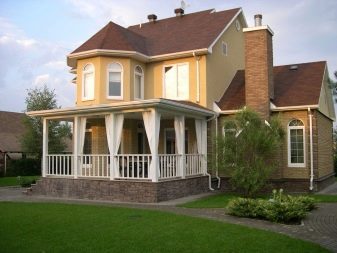
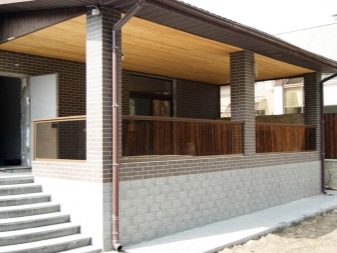
When attaching a terrace with your own hands, you need to consider:
- climatic characteristics of the area;
- the type of soil and the depth of its freezing in winter;
- average annual level of snow cover;
- the type and physical condition of the wall to which the building will adjoin;
- the required area and linear dimensions;
- construction materials planned for use.
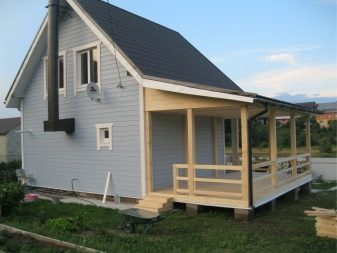

All these data must be immediately stated in the application for designers. Usually, the terrace is placed against the wall in which the entrance is located, thanks to which it is possible to use the building not only for leisure, but also as an entrance hall, and as a porch. In colder areas, it is recommended to install all outbuildings in the south and equip them with wide awnings. Where it is relatively warm, it is advisable to locate the terraces from the east or south, focusing on the maximum shading of the place. Be sure to take into account the prevailing winds, especially with their significant strength.
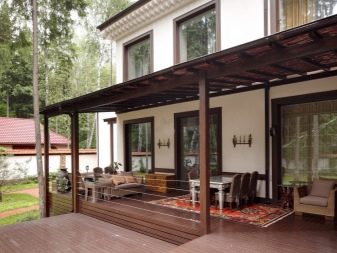
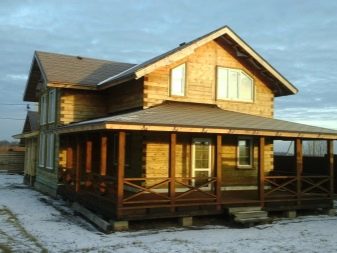
In any case, equip waterproofing over the support barto exclude the penetration of various precipitation into the gap between the terrace and the house. Aprons made of aluminum or steel with an external galvanized coating are often used. The foundation is waterproofed with bituminous mastic or adhesive material (laid in a couple of rows). To the question of how to insulate the terrace, the answer is very simple: in any way, all the same, the building will not be heated.After the manufacture of racks and rafters, their installation, it is required to sheathe such structures using boards or a polished slab.
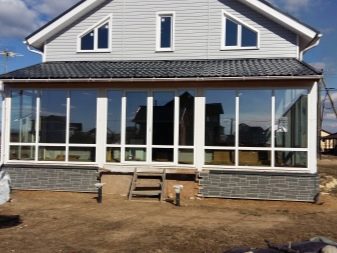
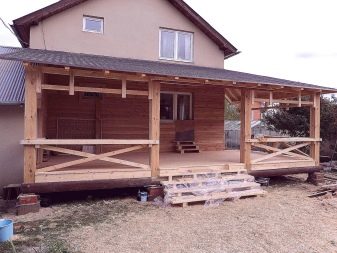
The voids separating the opposite edges are saturated with sawdust. But long before the construction of the rafters, it is necessary to deal with the base of the terrace - there are also many interesting things here.
Foundation
The foundation in most cases implies the use of concrete blocks with dimensions of 0.3x0.3 m, which are buried ½ of the height into solid solid ground. Typically, the parts are placed on a sand cushion so that the edge protrudes upwards by 150 mm. Then parts of the frame will not rot due to contact with the invariably moist soil.
Important: blocks of concrete cast in artisanal conditions can replace factory products only in warm areas where there is no freezing of the soil, or it is mild. The pile foundation turns out to be the optimal and most economical solution in the middle lane on top of heaving soil.
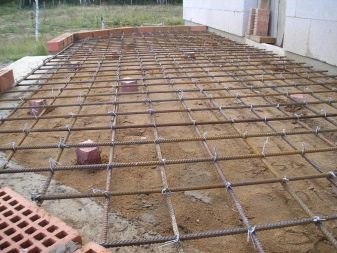
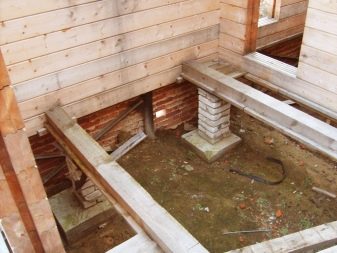
When choosing a structure, they are guided primarily by the rigidity and stability of the structure as a whole, as well as the conformity of the base under the terrace and under the main house; if it is not provided, buildings may begin to deform. Racks (that is, pillars) are prepared in advance, with the help of which the load created by the terrace will be evenly distributed on the foundation plane. For the most part, such elements are given a section of 10x10 cm, although for a large structure it will be necessary to increase the size of the supports.
Important: to attach the racks to the foundation is supposed to be brackets, since pouring with concrete will lead to early decay.
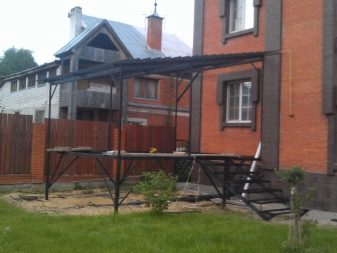

The racks can be made in two versions: in one they support the beams, in the other they pass through the flooring, forming fences or benches. Placing the beams on the uprights can be simple overlapping or attaching using screws (bolts). The beams are set horizontally, if necessary, lining is used for alignment. In cases where it is planned to use not flooring, but a solid wood structure, you need to give it a slight slope in the direction from the house (about 1%). By increasing the cross-section of the beams, it is possible to make a larger span between the individual posts, that is, to save on the number of blocks in the base.

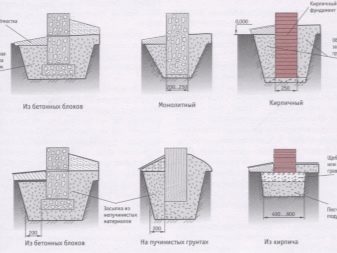
For the manufacture of logs, most often boards with a size of 5x15 cm are used, lay logs at right angles with a gap of 40, 60, 80 or 120 cm - it depends on how thick the flooring will be created. The use of screw piles, grillage or pile-monolithic construction is required when there is a reservoir in the immediate vicinity of the construction site.
Flooring
When constructing the flooring, the logs should not be visible, but they should still be placed in advance with the same distance and strictly parallel. Then it will be easier to fix the railing later. Depending on the location of the lags, it is possible to ensure an even and neat arrangement of the connecting screws. Or it fails - if the work was approached unprofessionally. The lags are attached with screws (bolts) to the support bar at the walls.
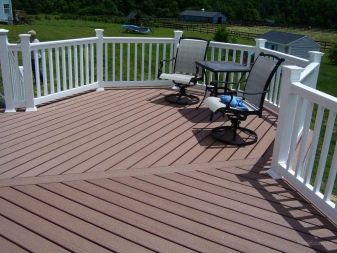
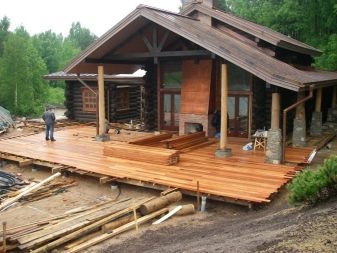
This beam is positioned so that from the top point of the flooring to the base of the door opening, a gap of 3 cm remains. Then the precipitation will not enter the room through the threshold. To fix the lags, it is necessary to use metal suspensions in the form of the Latin letter U. This is tougher and more reliable than a connection of screws and nails. In the event of the slightest damage or shift, the immediate savings will result in significant losses; All professionals consider the use of support strips to be the worst installation method.
When making a frame, beams are most often attached to high posts passed through the boardwalks (since a completely finished railing post is immediately created). For a span of 180 cm, beams with a section of 10x15 cm are recommended, and for a larger size of 240 cm, this figure must be increased to 10x20 cm.

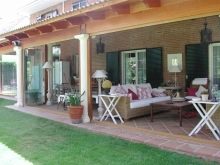

Joining the planks involves placing the bolts evenly, the departure from the upper cut is at least four bolt diameters. Parts that will be compressed should also be spaced to avoid cracking the wood. Decking boards should be no wider than 15 cm, otherwise there is a high probability of warpage of the material. Gaps of 0.3 cm are made between them so that water can flow freely. Structures hanging at the edges outside the contour are the norm; it is undesirable to try to fit them strictly.
It is supposed to nail the flooring with galvanized nails, since the building is open to all winds and precipitation, the rusting metal will quickly deteriorate.
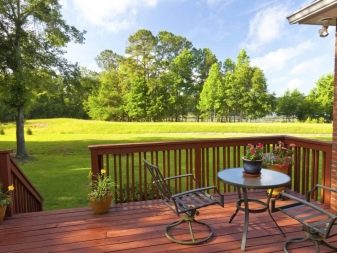

Fencing
Having prepared the flooring, you can start working with the railings; if you add a grill to your liking, you can guarantee yourself peace and privacy in a quiet corner. In this case, it is required to carefully check how reliable the railing is. Breaking or even simply bending them when trying to lean on them will be a very unpleasant event. If you put boards up to 10 cm wide on top, you can use the structure as a stand for decorative items. Each wooden part is treated with antiseptic mixtures, after which drying oils, paints, varnishes or stains are used.
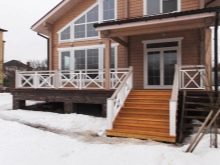

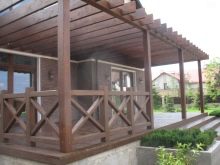
Roof
There are quite a few varieties of roofing solutions suitable for a terrace. Often, the covering is made similar to the final part of the main building, then it is laid on wooden rafters, attached to the upper harness using vertical posts. A solid competition for this option is a polycarbonate-based roof. There are modifications with a roof made of transparent grades of slate, from stretched awnings. Openable voluminous umbrellas are a purely summer solution, and you will need to urgently remove furniture and household items when it starts to rain.


Decoration
Decorating details, installed inside or outside the terrace, are very diverse. A typical solution involves the use of uprights, balusters and railings attached to roof supports or special beams. Instead of capital barriers around the perimeter, it is often recommended to use lightweight tulle, which gives the space lightness. You cannot do without furniture - tables, sun loungers and even armchairs; it is advisable to use pots with flowers and beautiful bushes. Some designers consider the use of hedges to be a good design step.
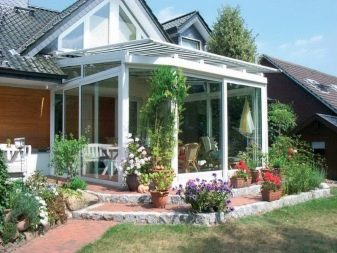
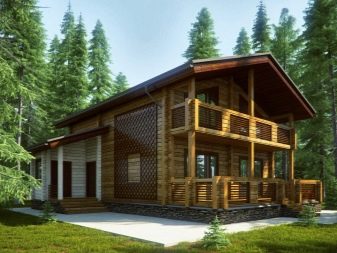
Professional advice
According to experts, building a terrace correctly is, first of all, correctly assessing the required area. 15 sq. m is enough only for a table, four chairs and aisles between them. If the area is from 15 to 30 m2, it is permissible to already install one or two sun loungers. It is impractical to build an oblong terrace, the smallest width of which is 300-350 cm. In a house where small children live, it makes sense to supplement the extension with a sandbox.
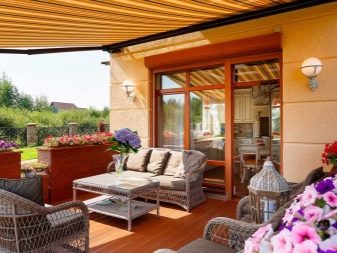
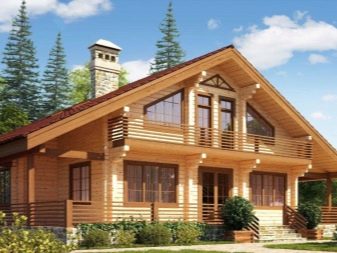
Observing the simplest requirements and strictly following the generally accepted algorithm, you can build a high-quality, comfortable terrace next to a country or country house.
For information on how to properly attach a terrace to the house with your own hands, see the next video.





























































The comment was sent successfully.